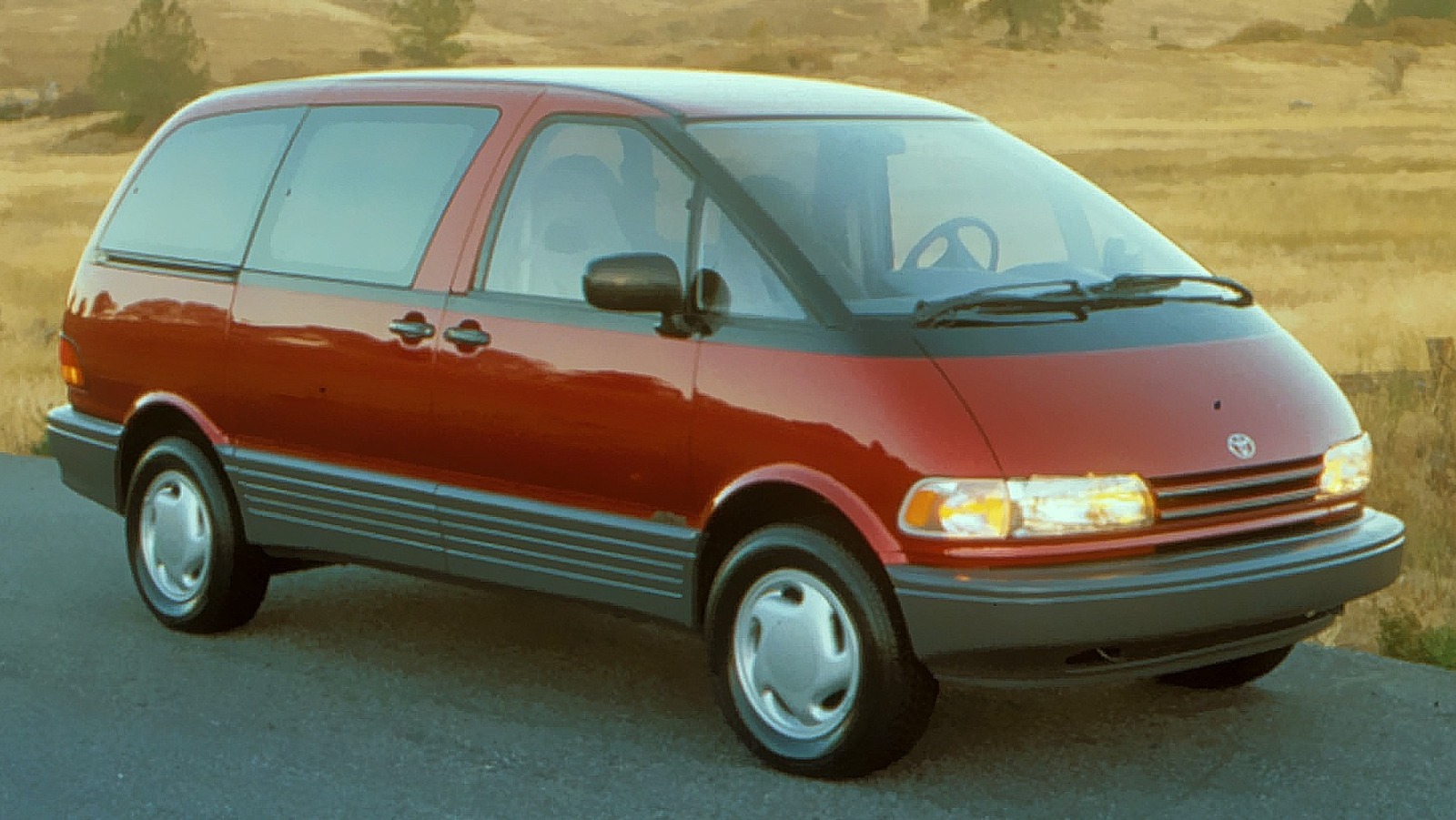
It certainly wasn’t the engine specifications that gave the Previa its cool factor. The four-cylinder engine produced only 138 horsepower, which is more than adequate for hauls to Disney World over the summer, but hardly a performance monster. The Previa’s whale shark-like shape allowed it to swallow all sorts of cargo or up to seven passengers. But that’s not really unusual for any number of minivans, although reviews from 1990, the first year the Previa was offered, noted that the interior was notably more spacious and comfortable than competing vans of the miniature variety. Moving the engine essentially underneath of the car allowed the interior to have more usable space within the wheelbase.
Just by the nature of the vehicle, front-engined cars can handle differently than mid-engine cars. The heaviest part of the car’s drivetrain, the engine, can have a notable impact on how the car behaves when you’re sawing the steering wheel. Midengine vehicles tend to have a more centered weight distribution, leading to more predictable handling.
Normally minivans spend their entire lives getting filled with all manner of crumbs and gummy worms until they graduate to carrying furniture or the odd mountain bike. They aren’t designed to traipse around a racetrack with all the grace of a hand-built supercar that costs as much as a city block. According to a Car and Driver review from the era, the Previa handled twisty back roads and the highway equally well and it was downright easy and comfortable to drive. Placing the engine directly under the driver wasn’t a mere party trick.
Stay connected with us on social media platform for instant update click here to join our Twitter, & Facebook
We are now on Telegram. Click here to join our channel (@TechiUpdate) and stay updated with the latest Technology headlines.
For all the latest Gaming News Click Here
